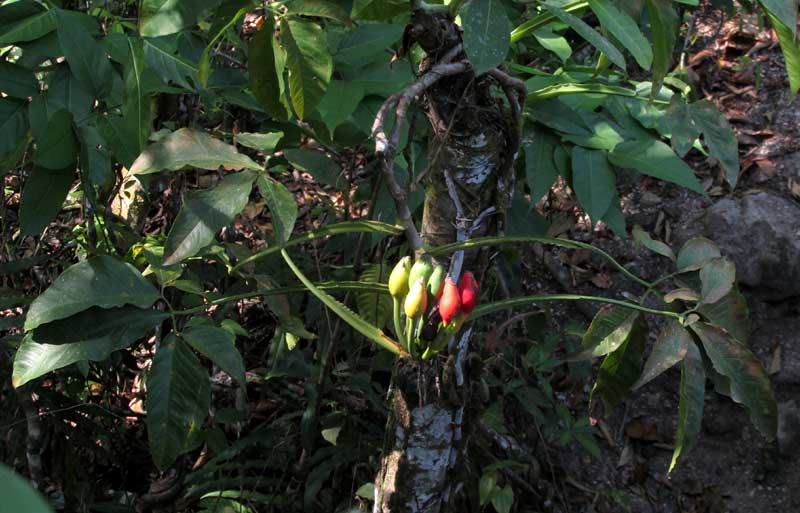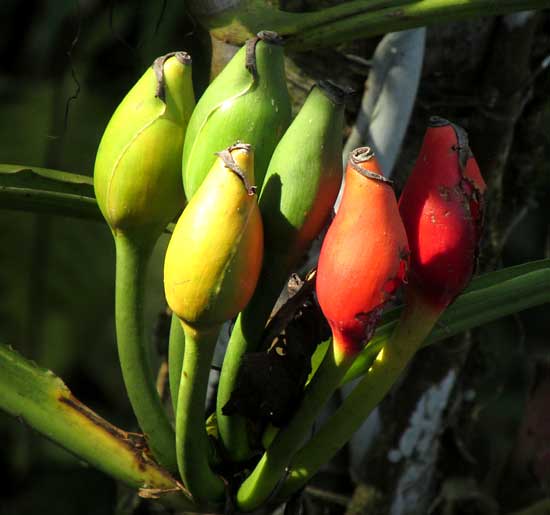Excerpts from Jim Conrad's
Naturalist Newsletter
from the April 24, 2016 Newsletter with notes from a visit to Lacanja Chansayab in the Lacandon Reserve; elevation 200m (650ft), N16.604°, W90.917°; Chiapas, MÉXICO
SYNGONIUM VINE

A viny, high-climbing member of the Arum or Jack-in-the-pulpit Family, the Araceae, commonly seen in Chiapas's Lacandon Reserve, is the one shown above.
Notice that the big blades are attached to long, arcing petioles, and that the blades are compound, consisting of several leaflets, very unlike the above Monstera Vine. In the above picture, the cluster of fruiting structures in the center is what catches the eye, and a close-up of that is shown below:

The oval, red-turning things on erect stalks are not fruits but rather what can be called "fruiting spadices." You might recall that flowers in the Arum Family are very small and numerous, packed closely together on a vertical, finger-like structure known as a spadix, with male flowers at the spadix's top, and female ones at the bottom. The entire spadix is accompanied by a leafy "spathe," which partly or completely wraps around the spadix. On the Jack-in-the-pulpit flower, "Jack" is the spadix while the "pulpit" is the spathe.
In the picture, the male part and the part of the spathe wrapping around the male part have fallen off, leaving a scar at the top of the oval "fruiting spadices." The fleshy, red-turning coverings of the "fruiting spadices" are parts of the old spathes that formerly enclosed the female part, or bottom, of the flowering spadix. Inside the mature, red "fruiting spadices" at the right in the picture, the former ovaries now are mature fruits grown together into a fruit-like structure something like an ear of corn. Each "fruiting spadix" is actually a collection of many fruits, which are hidden inside the fruiting body.
This is SYNGONIUM ANGUSTATUM, a species that barely reaches into the Yucatan Peninsula, but which is common in Chiapas and Guatemala south to Costa Rica. It has no good English names so some aroid enthusiasts just to call it Syngonium Vine.
At Hacienda Chichen in north-central Yucatan the vine is planted and we've documented its leaf variation, aerial roots and flowers there, as shown at www.backyardnature.net/yucatan/syngonm.htm